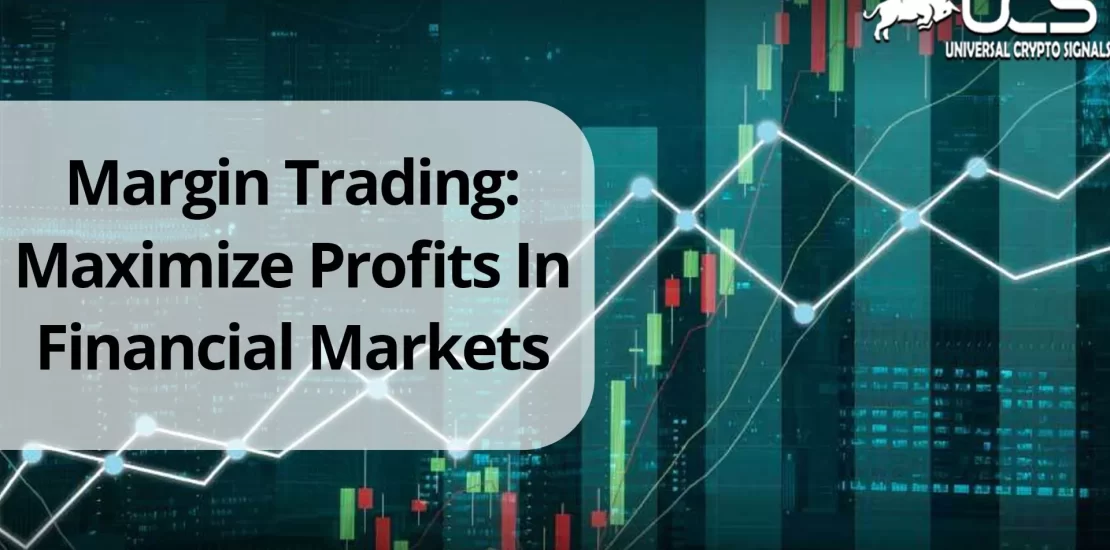- July 19, 2023
- Posted by: Subham Seth
- Category: News

1. Introduction
Margins trading is a popular investment strategy that allows traders to amplify their potential returns by borrowing funds to invest in various financial instruments. It enables individuals to trade with more capital than they actually possess, using leverage provided by a broker or an exchange.
Margin trading has substantial dangers even if it has the potential to be very rewarding, thus it is crucial for traders to thoroughly comprehend how it operates before engaging in such activities. We will discuss the idea of margin trading in this post, along with its mechanics, advantages, hazards, and key factors.
In today’s financial landscape, margin trading has gained significant popularity among investors and traders. It provides an opportunity to increase potential profits by utilizing borrowed funds to trade larger positions. However, it’s crucial to approach margins trading with caution, as it also magnifies losses and poses risks that must be carefully managed.
2. What is Margin Trading?
Margin trading refers to the practice of borrowing funds from a broker or an exchange to trade financial assets. It allows traders to increase their market exposure beyond their available capital by utilizing leverage. Leverage acts as a multiplier, enabling traders to control larger positions with a smaller initial investment.
3. How Does Margin Trading Work?
In trading on margin, traders are required to deposit a certain percentage of the total trade value, known as the margin requirement. The margin acts as collateral for the borrowed funds. The ratio of a trader’s own capital to borrowed capital is known as the leverage ratio. For instance, if the leverage ratio is 1:1, the trader can manage $5 in assets for every $1 in cash.
4. Benefits of Margin Trading
Margin trading offers several benefits for traders. Firstly, it provides the opportunity to increase potential returns by amplifying gains on successful trades. Additionally, it enables traders to diversify their portfolio and hold positions in several different assets at once. trading on margin can also be a helpful tool for risk management and hedging tactics in choppy markets.
5. Risks Associated with Margin Trading
While margins trading can be lucrative, it carries inherent risks. One of the primary risks is the potential for substantial losses. Since traders are using borrowed funds, any decline in the market can result in amplified losses. It’s important to set strict risk management strategies, including stop-loss orders, to limit potential losses. Margin calls, where the broker demands additional funds to cover potential losses, are also a risk to consider.
6. Important Considerations for Margin Traders
Margin traders should be aware of several key considerations. Firstly, they must thoroughly understand the terms and conditions offered by their broker or exchange, including interest rates on borrowed funds. Secondly, traders should have a well-defined trading plan and risk management strategy to protect their capital. Furthermore, staying updated with market trends, news, and analysis is vital to make informed trading decisions.
7. Common Strategies in Margin Trading
Margin traders employ various strategies to maximize their returns. Some popular strategies include long and short positions, pairs trading, and arbitrage. Each strategy involves different risk levels and requires a thorough understanding of the underlying assets and market conditions.
8. Margin Trading Platforms and Exchanges
Numerous platforms and exchanges facilitate trading on margin across different financial markets, including stocks, cryptocurrencies, forex, and commodities. Popular systems provide intuitive user interfaces, cutting-edge trading tools, and real-time market data access. It’s crucial to pick a trustworthy platform with strong security safeguards and a dependable customer support system.
9. Margins Trading in Different Financial Markets
Trading on margin is not restricted to a single financial market. Many different businesses use it, including stock markets where investors can borrow money to buy or sell stocks. Another option offered by cryptocurrency exchanges that enables consumers to leverage their digital assets is margin trading.Additionally, there are margin trading opportunities in the FX and commodity markets.
10. Tax Implications of Margins Trading
Margin trading can have tax implications that vary depending on the jurisdiction. It’s essential for traders to consult with a tax professional or research applicable tax laws to understand their tax obligations. Keeping accurate records of trades, profits, and losses is crucial for tax reporting purposes.
11. Margin Trading Regulations and Restrictions
what is trading margin is subject to regulations and restrictions imposed by financial authorities in different jurisdictions. These regulations aim to protect investors and maintain market stability. Traders should familiarize themselves with the regulatory framework in their country and ensure compliance with any applicable rules and requirements.
12. Real-life Examples of Margin Trading
Real-life examples of successful margins trading strategies can provide valuable insights for aspiring traders. Case studies and learning from experienced traders can aid in understanding the complexities of margin trading and developing effective tactics. However, keep in mind that past performance is not a guarantee of future outcomes.
13. Tips for Beginners in Margin Trading
For beginners entering the world of margin trading, it’s crucial to start with a solid foundation. Here are a few tips to consider:
- Educate yourself thoroughly about margin trading and the associated risks.
- Begin with a small amount of capital to gain experience and confidence.
- Develop a trading plan and stick to it.
- Practice risk management by setting stop-loss orders and avoiding excessive leverage.
- Start with low-risk strategies and gradually increase complexity as you gain proficiency.
Conclusion
Margin trading offers the potential for increased returns and expanded market exposure. But there are major dangers involved, therefore careful planning and risk management are needed. Before engaging in such operations, traders should have a firm understanding of the margins trading process, advantages, and hazards.
Add a comment
You must be logged in to post a comment.



